Smart farming technologies are transforming agriculture from above, offering innovative solutions to boost efficiency and sustainability. You'll find drones and satellites monitoring crop health, detecting issues early, and providing essential data for precision irrigation. These aerial tools also aid in pest and disease detection, soil analysis, and livestock management. They're revolutionizing planting and harvesting processes, while AI-driven systems optimize yields and integrate farm data. With these advancements, you can make informed decisions, reduce resource waste, and increase productivity. The future of farming is taking flight, and there's a whole world of aerial innovations waiting to be explored.
Aerial Crop Health Assessment

In recent years, aerial crop health assessment has revolutionized modern farming practices. You'll find that drones and satellite imagery now play an essential role in monitoring crop health, allowing you to detect issues before they become visible to the naked eye. These aerial technologies provide high-resolution images and data on plant vigor, stress levels, and nutrient deficiencies.
By utilizing multispectral and thermal cameras, you can identify variations in crop health across your fields. These tools measure factors like chlorophyll content, water stress, and pest infestations. With this information, you're able to make informed decisions about irrigation, fertilization, and pest management.
You'll appreciate the time and cost savings aerial assessments offer. Instead of manually scouting large areas, you can quickly survey entire fields, pinpointing trouble spots that require immediate attention. This targeted approach reduces the need for blanket treatments, minimizing chemical use and environmental impact.
As you implement aerial crop health assessment, you'll notice improved yield predictions and better resource allocation. By addressing issues early and precisely, you'll maximize your farm's productivity and sustainability, staying ahead in the competitive agricultural landscape.
Precision Irrigation Management

You'll find that precision irrigation management is a game-changer for your farm's water usage enhancement.
By implementing smart sensors and data-driven systems, you're able to deliver water exactly where and when your crops need it most.
This targeted approach guarantees ideal crop hydration while greatly reducing water waste and associated costs.
Water Usage Optimization
Three key components make up precision irrigation management: sensors, data analysis, and automated controls. These elements work together to optimize water usage on your farm, ensuring crops receive just the right amount of water at the right time.
You'll find sensors placed strategically throughout your fields, monitoring soil moisture levels, temperature, and weather conditions. These sensors continuously collect data, which is then transmitted to a central system for analysis.
Advanced algorithms process this information, considering factors like crop type, growth stage, and weather forecasts. Based on this analysis, automated controls adjust irrigation schedules and water flow rates.
You'll see sprinklers activating only when necessary, delivering precise amounts of water to specific areas. This targeted approach eliminates overwatering and reduces water waste.
Targeted Crop Hydration
Beneath the surface of precision irrigation management lies targeted crop hydration, a game-changing approach to water distribution. This method tailors water delivery to each plant's specific needs, maximizing efficiency and minimizing waste.
You'll find that targeted crop hydration utilizes advanced sensors and data analytics to determine the exact amount of water required for ideal growth.
By implementing this technology, you're able to monitor soil moisture levels in real-time and adjust irrigation schedules accordingly. You'll notice improved crop health and yields as plants receive water precisely when and where they need it.
Targeted hydration also helps you combat issues like overwatering, which can lead to root rot and nutrient leaching.
You'll appreciate the cost savings associated with this approach, as you'll use less water and reduce energy consumption for pumping.
Additionally, you're contributing to environmental conservation by minimizing water runoff and reducing the strain on local water resources.
With targeted crop hydration, you're not just improving your farm's productivity; you're also embracing sustainable agriculture practices that benefit both your bottom line and the planet.
Pest and Disease Detection
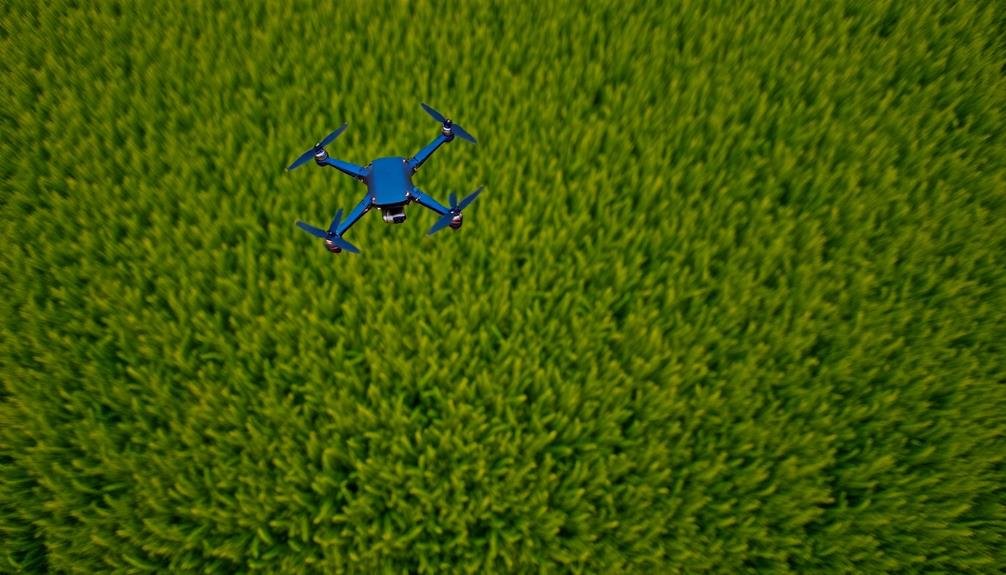
Effective pest and disease detection forms the backbone of modern smart farming practices. You'll find that advanced technologies like drones and AI-powered sensors are revolutionizing how you identify and manage threats to your crops. These tools allow you to spot issues early, often before they're visible to the naked eye.
Drones equipped with multispectral cameras can capture detailed images of your fields, highlighting areas of stress or infestation. You'll receive real-time data on crop health, enabling you to take swift action. AI algorithms analyze these images, detecting subtle changes in plant color, texture, or growth patterns that might indicate pest activity or disease onset.
Ground-based sensors complement aerial surveillance by monitoring soil conditions and plant essentials. They'll alert you to environmental factors that could make your crops more susceptible to pests or diseases.
By integrating this data with weather forecasts and historical information, you can predict potential outbreaks and implement preventive measures. This proactive approach considerably reduces your reliance on blanket pesticide applications.
You'll be able to target treatments precisely, minimizing chemical use and preserving beneficial insects. Ultimately, smart pest and disease detection helps you maintain healthier crops, reduce costs, and boost yields.
Soil Analysis From Above

In addition to pest detection, smart farming technologies are revolutionizing soil analysis from above. You can now assess your soil's health without setting foot in the field, thanks to advanced remote sensing techniques.
Multispectral and hyperspectral imaging from drones or satellites capture detailed information about your soil's composition, moisture content, and nutrient levels. These images reveal variations in soil properties across your fields, allowing you to identify areas that need specific attention.
You'll spot nutrient deficiencies, pH imbalances, and moisture stress before they become visible to the naked eye. This data enables you to create precise fertilization and irrigation plans, optimizing resource use and boosting crop yields.
Machine learning algorithms analyze the collected data, providing you with actionable insights. You'll receive recommendations for targeted soil treatments, helping you make informed decisions about crop rotation, fertilizer application, and water management.
Livestock Monitoring With Drones

Drones are taking livestock management to new heights. You can now monitor your herds more efficiently and effectively than ever before. These aerial devices offer a bird's-eye view of your animals, allowing you to track their movements, health, and behavior patterns without disturbing them.
With drone technology, you'll be able to:
| Benefits | Applications |
|---|---|
| Save time and labor | Count livestock accurately |
| Detect health issues early | Monitor grazing patterns |
| Improve farm security | Locate lost or injured animals |
You can equip your drones with thermal imaging cameras to detect changes in body temperature, potentially identifying sick animals before symptoms become visible. This early intervention can prevent the spread of diseases and reduce treatment costs.
Drones also help you optimize your pasture management. By analyzing aerial footage, you'll identify overgrazed areas and adjust your rotational grazing strategy accordingly. This guarantees your animals have access to fresh forage and prevents overgrazing.
Moreover, you can use drones to inspect fences and water sources, guaranteeing your livestock's safety and access to essential resources. With these smart farm solutions, you'll revolutionize your livestock management practices, leading to healthier animals and a more productive farm.
Automated Planting and Harvesting
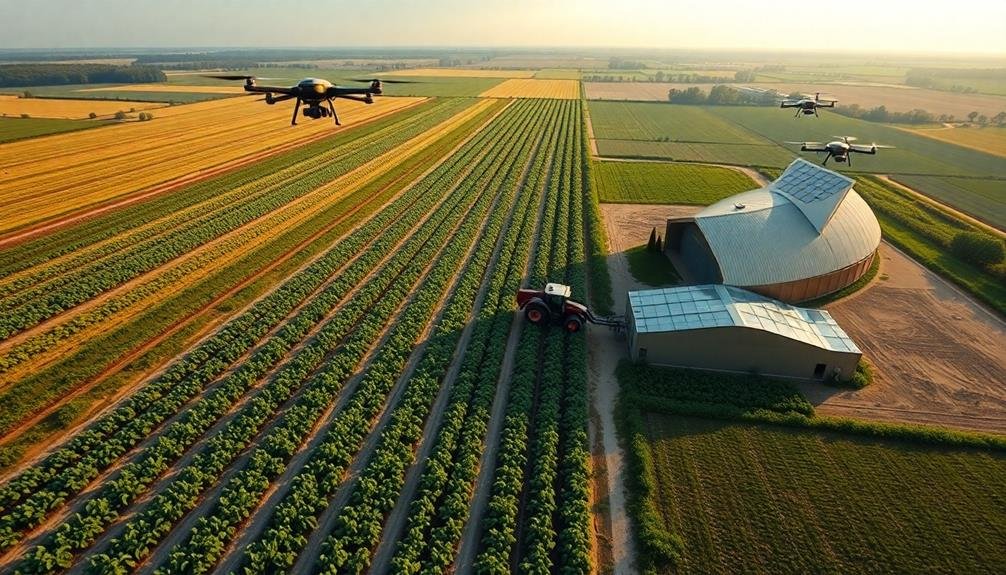
You're about to discover how automated planting and harvesting are revolutionizing agriculture.
Precision seed placement guarantees ideal spacing and depth for each crop, while robotic harvesting systems increase efficiency and reduce labor costs.
AI-driven yield optimization analyzes data to maximize crop output, helping you make informed decisions about planting times, irrigation, and resource allocation.
Precision Seed Placement
Precision seed placement revolutionizes modern farming through automated planting and harvesting techniques. You'll find that this technology utilizes GPS-guided machinery to plant seeds with incredible accuracy, ensuring ideal spacing and depth for each crop type. By using smart farm solutions, you're able to maximize yield potential and reduce waste.
These systems often incorporate soil sensors and mapping technologies to determine the best planting locations based on soil conditions, moisture levels, and nutrient availability. You'll benefit from increased efficiency and reduced labor costs as machines handle the precise placement of seeds.
Here's a breakdown of key precision seed placement benefits:
| Benefit | Impact | Result |
|---|---|---|
| Improved spacing | Ideal resource use | Higher yields |
| Consistent depth | Better germination | Uniform crop growth |
| Site-specific planting | Tailored to soil conditions | Increased plant health |
Robotic Harvesting Systems
Numerous farms are now embracing robotic harvesting systems to automate their planting and harvesting processes. These advanced machines use sophisticated sensors, GPS technology, and artificial intelligence to efficiently pick fruits, vegetables, and grains with minimal human intervention.
You'll find that robotic harvesters can work around the clock, considerably increasing productivity and reducing labor costs.
One of the key advantages you'll notice is the precision these systems offer. They can identify ripe produce and handle it gently, reducing damage and waste.
You'll also appreciate their ability to navigate complex field layouts and adapt to varying crop conditions. For example, in orchards, robotic arms can reach high branches and selectively pick fruit at the ideal ripeness.
As you implement these systems, you'll see improvements in yield prediction and crop management. The data collected by robotic harvesters helps you make informed decisions about planting schedules, irrigation, and pest control.
Furthermore, you'll find that these machines can operate in challenging weather conditions and on terrain that might be difficult for human workers.
Ai-Driven Yield Optimization
While robotic harvesting systems revolutionize the collection process, AI-driven yield enhancement takes smart farming to the next level. You'll find that this technology uses machine learning algorithms to analyze vast amounts of data, including soil conditions, weather patterns, and crop health, to make informed decisions about planting and harvesting.
With AI-driven yield enhancement, you can expect automated planting systems that precisely place seeds at ideal depths and spacing. These systems adjust in real-time based on soil composition and moisture levels, ensuring the best possible start for your crops.
During the growing season, AI continuously monitors your fields, detecting early signs of disease, pest infestations, or nutrient deficiencies.
When it's time to harvest, AI algorithms determine the perfect moment to maximize yield and quality. You'll benefit from automated harvesting equipment that adjusts its approach based on crop conditions, minimizing waste and damage.
This technology also helps you predict yields more accurately, allowing for better resource allocation and market planning. By implementing AI-driven yield enhancement, you'll see increased productivity, reduced costs, and improved sustainability in your farming operations.
Yield Prediction and Forecasting
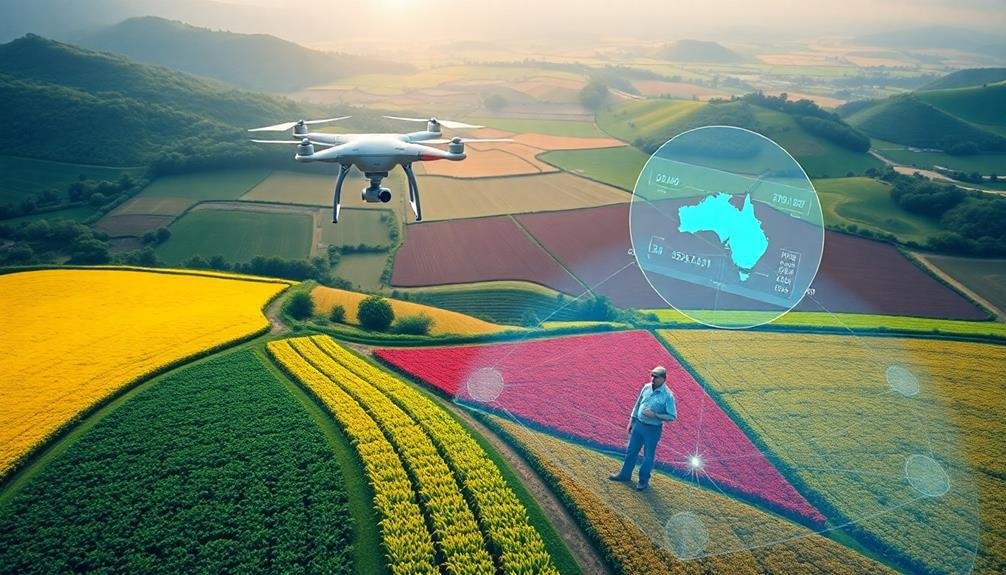
Anticipation drives modern agriculture's quest for accurate yield prediction and forecasting. You'll find that cutting-edge technologies are revolutionizing this field, enabling farmers to make data-driven decisions with unprecedented precision. By leveraging AI algorithms, satellite imagery, and on-ground sensors, you can now predict crop yields weeks or even months in advance.
These smart farm solutions analyze vast amounts of data, including:
- Historical yield records
- Weather patterns and forecasts
- Soil health and moisture levels
You'll benefit from real-time insights into your crops' performance, allowing you to adjust irrigation, fertilization, and pest control strategies proactively. This foresight helps you optimize resource allocation and minimize waste, ultimately boosting your farm's productivity and profitability.
Moreover, yield prediction tools assist in supply chain management and market planning. You can confidently estimate your harvest volumes, negotiate contracts, and plan storage and transportation needs well in advance. This level of predictability not only streamlines your operations but also contributes to global food security by providing early warnings of potential shortages or surpluses.
As you embrace these smart farming technologies, you'll find yourself at the forefront of agricultural innovation, making informed decisions that drive sustainable growth and efficiency.
Farm Data Integration Systems
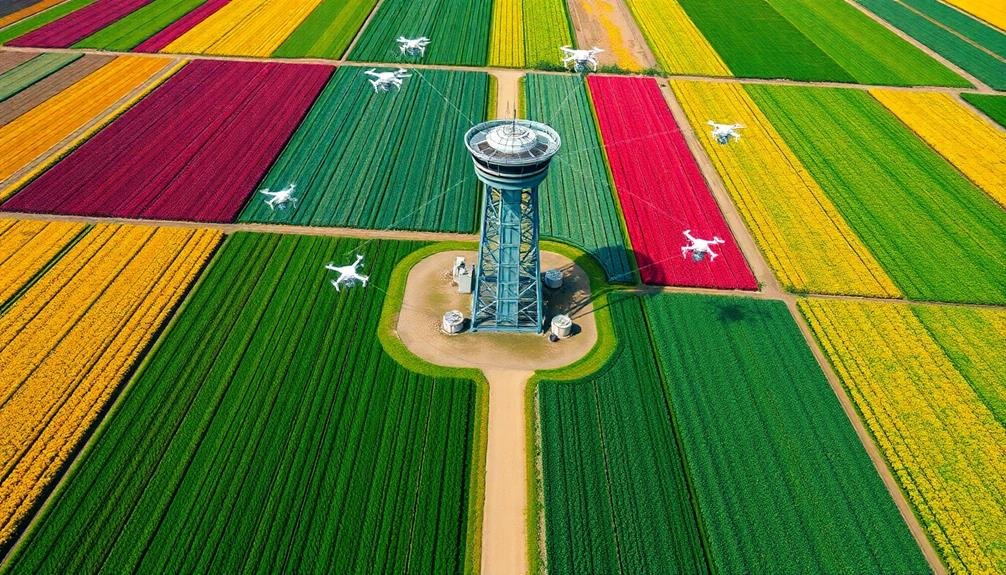
As smart farming technologies proliferate, farm data integration systems have become essential for maximizing their potential. These systems collect, process, and analyze data from various sources, including sensors, drones, satellites, and farm equipment. You'll find that integrating this diverse data helps you make more informed decisions and optimize your farming operations.
Farm data integration systems allow you to centralize information from different platforms and devices. You can easily access soil moisture levels, weather forecasts, crop health indicators, and equipment performance data in one place. This consolidated view enables you to identify trends, correlations, and potential issues more quickly.
By implementing these systems, you'll streamline your workflow and reduce manual data entry. You can automate data collection and analysis, saving time and minimizing errors. Additionally, you'll benefit from improved data accuracy and consistency across your farm management processes.
These integration systems often come with user-friendly interfaces and customizable dashboards. You can tailor the display to focus on the metrics most relevant to your farm's needs, making it easier to interpret and act on the information at hand.
Frequently Asked Questions
How Much Does Implementing Smart Farm Solutions Typically Cost for Small Farms?
You'll find costs vary widely for small farms. Basic drone solutions start around $1,000, while extensive systems with sensors and software can reach $10,000 or more. It's best to start small and scale up gradually.
Are There Privacy Concerns Associated With Using Drones for Agricultural Purposes?
You might face privacy concerns when using drones for farming. They can capture images of neighboring properties or people, raising issues about data collection and surveillance. It's essential to follow local regulations and respect others' privacy rights.
What Training Is Required for Farmers to Effectively Use Smart Farming Technologies?
To effectively use smart farming technologies, you'll need training in data analysis, GPS/GIS systems, and drone operation. You should also learn about precision agriculture techniques, IoT devices, and how to interpret sensor data for crop management decisions.
How Do Weather Conditions Affect the Accuracy of Drone-Based Agricultural Assessments?
Weather conditions greatly impact drone-based agricultural assessments. You'll find that wind, rain, and extreme temperatures can affect flight stability, sensor accuracy, and image quality. It's best to operate drones in calm, clear conditions for ideal results.
Can Smart Farming Technologies Integrate With Existing Traditional Farming Equipment and Methods?
You'll find that smart farming tech can seamlessly integrate with your existing equipment. It's often designed to complement traditional methods, enhancing efficiency. You can use sensors, GPS, and data analytics alongside your familiar tools and techniques.
In Summary
You're witnessing a revolution in farming. Smart technologies from above are transforming agriculture, making it more efficient and sustainable. From crop health assessment to automated harvesting, these innovations are changing the game. You'll see increased yields, reduced resource use, and better crop management. As you embrace these new tools, you're not just improving your farm; you're shaping the future of agriculture. It's time to look up and see the possibilities.
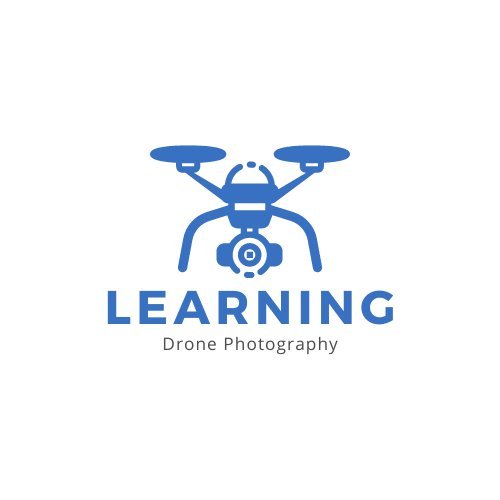
As educators and advocates for responsible drone use, we’re committed to sharing our knowledge and expertise with aspiring aerial photographers.

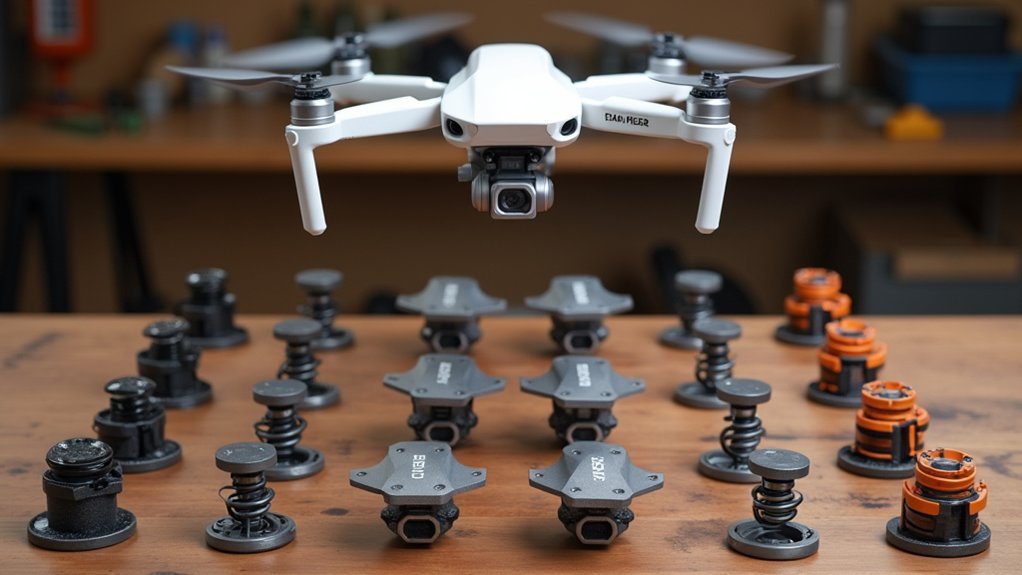
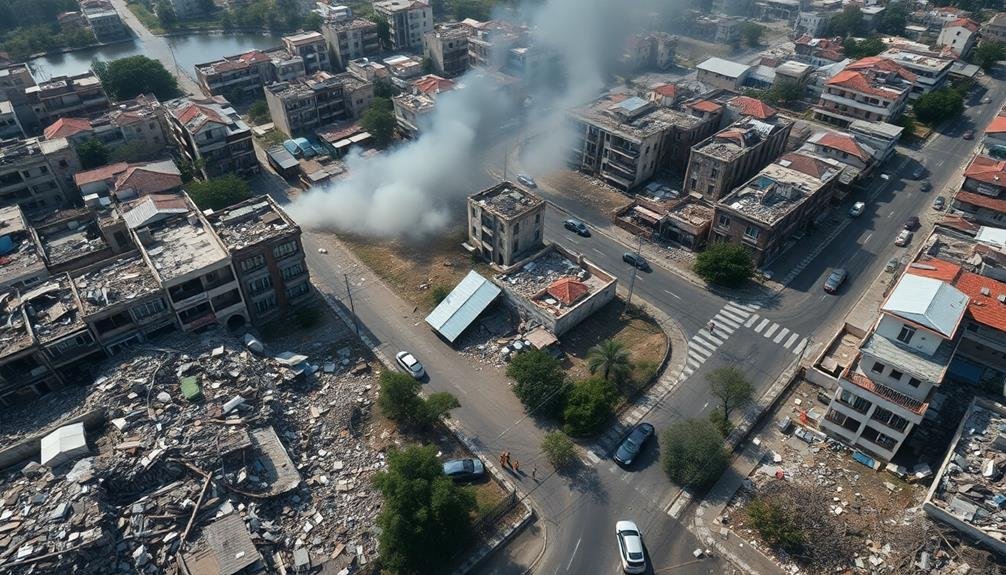
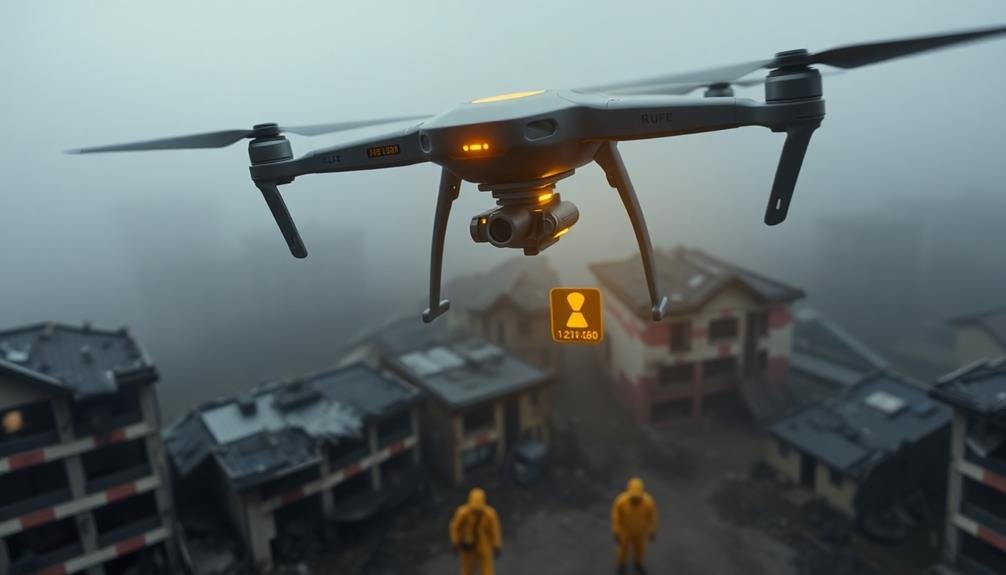
Leave a Reply